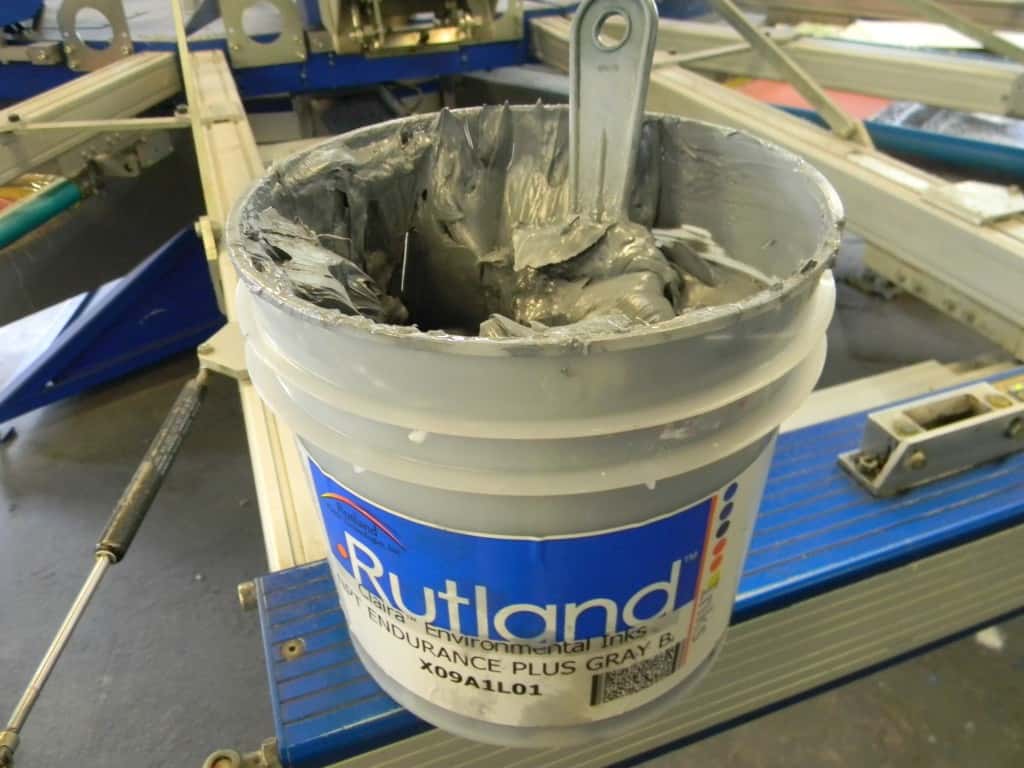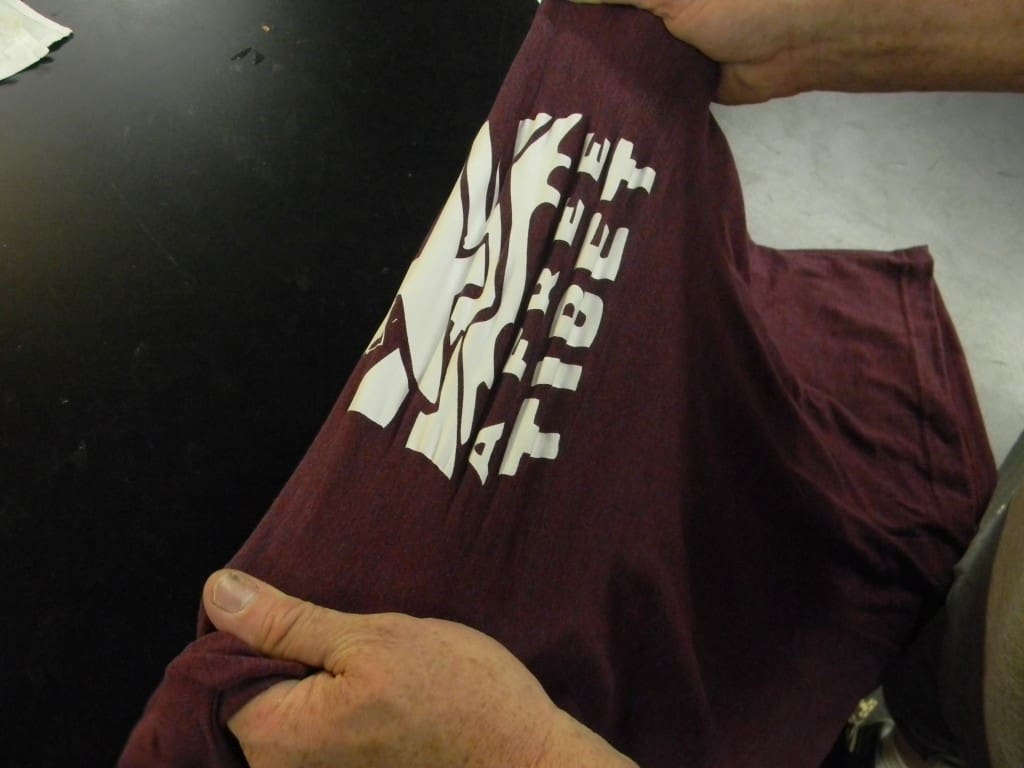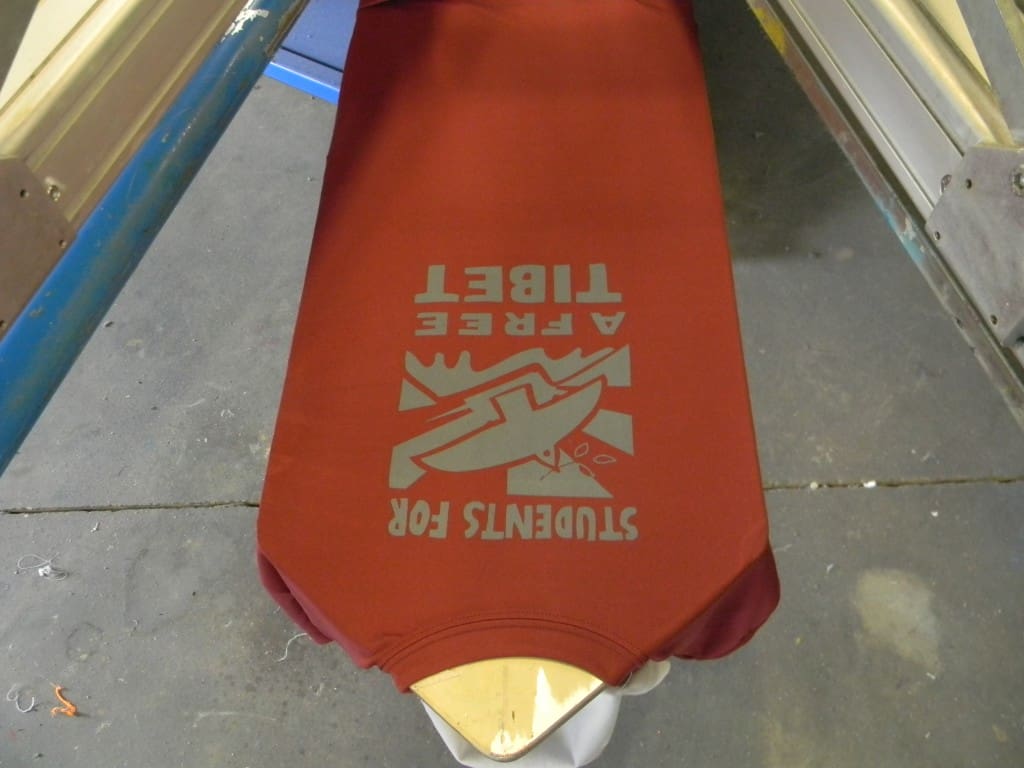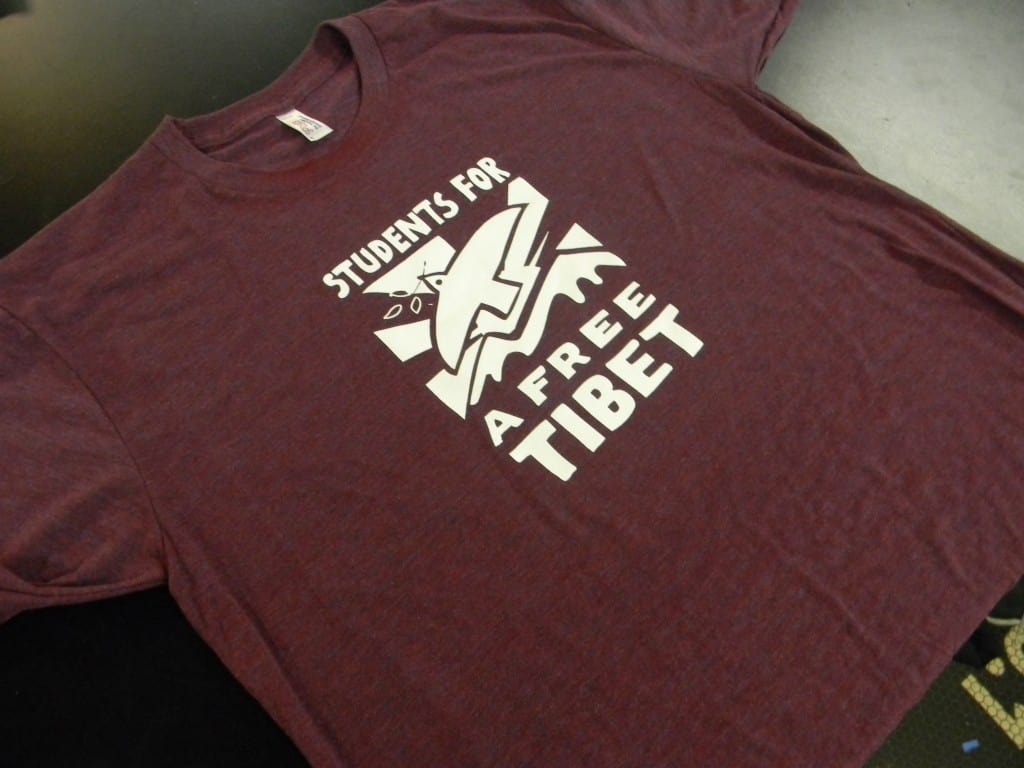Oops, sorry, wrong Endurance. That featured image is the ship The Endurance which was stranded in Antarctic ice leading to one of the most amazing stories of survival, that of Ernest Shackleton. Although… maybe successfully printing on bleeding dye migrating fabrics is nearly the challenge that Shackleton faced.
The story today is actually about Endurance ink, which is an ink made by Rutland to prevent dye migration. The Endurance inks are made to cure at a lower temperature than traditional plastisol, and right away that can lead to better results as dye migration is partly caused by heating the dyes in certain fabrics. Less heat leads to less dye migration into the ink. The grey in the series has most of the same dye blocking ability as the Rutland barrier grey ink, but is far easier to print. It also has more stretch to it than prints do that are done with the barrier grey.
As with any of these solutions to preventing dye migration, it is not a panacea, it is a partial solution.
Pros:
- Excellent dye blocking properties
- Cures at a lower temperature (around 300 degrees vs. traditional plastisol at 320.)
- High stretch, so it will not crack on some very “stretchy” fabrics that also have dye migration issues.
- Softer than straight barrier grey inks
- Creamier and easier to print than barrier grey inks
- Prints in thinner coats than barrier grey, so better results on thin fabrics. In addition because it is soft and pliable it drapes better.
- If printed and cured properly this is an excellent choice for thin tri-blend and 60/40 and 50/50 fabrics, which increasingly we all have to print
Cons:
- Not as powerful as barrier grey in preventing dye migration
- As with barrier grey it adds an extra screen to the process and probably an additional flash.







Comments